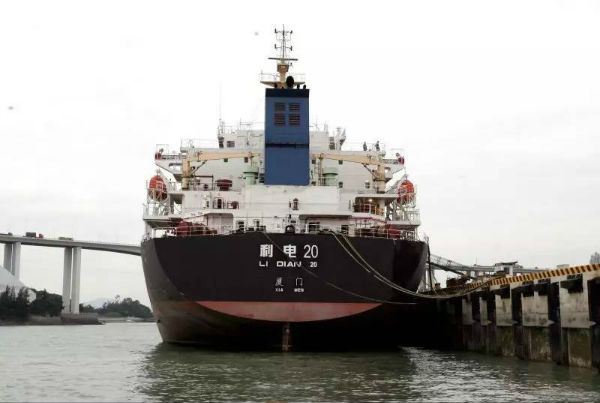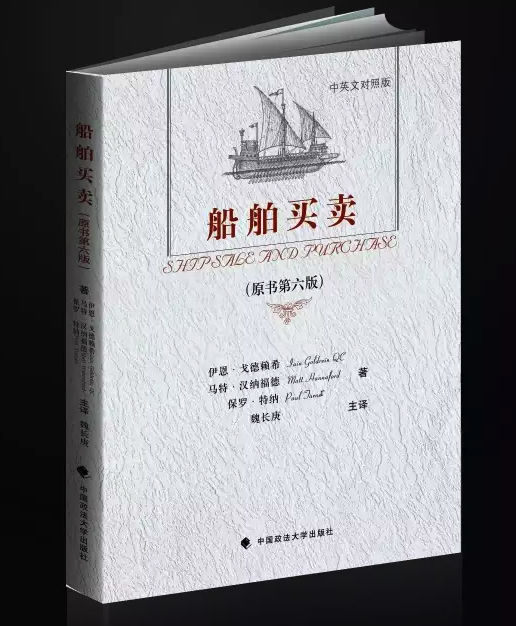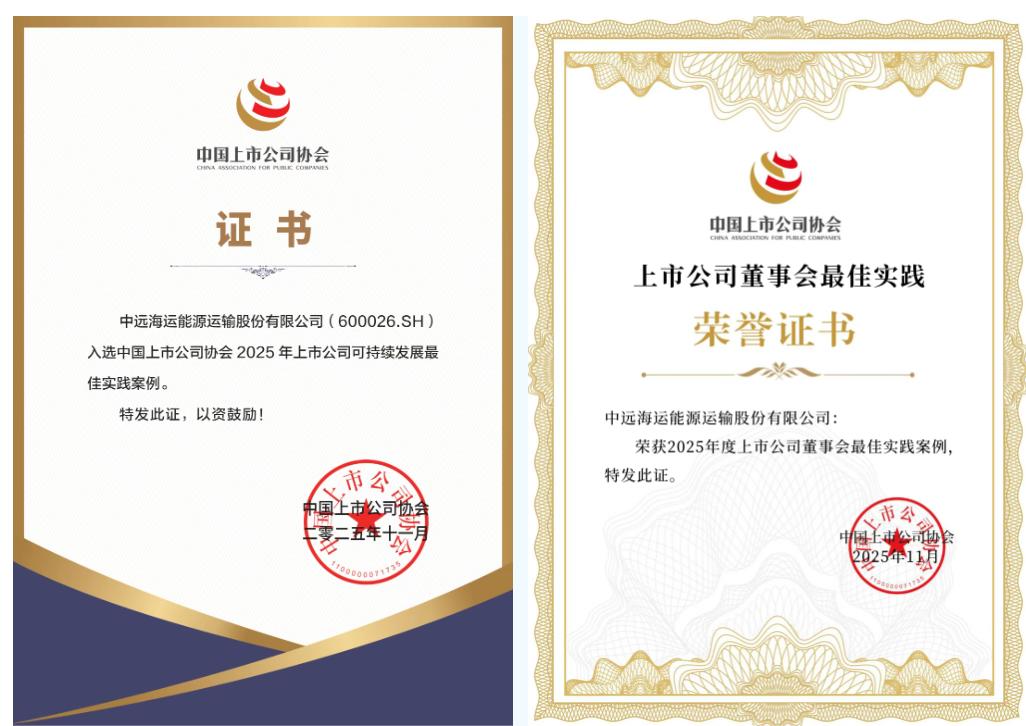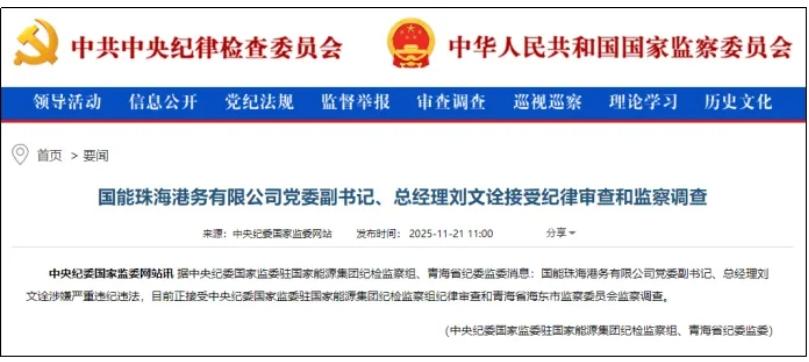
船舶买卖合同何时产生约束
4.3 WHEN IS THERE A BINDING CONTRACT? 4.3何时产生约束性合同?
4.3.1 A problem of interpretation 4.3.1 合同解释的问题
The negotiations for a commercial contract may be lengthy, complicated and carried on with varying degrees of formality and it may be difficult to say whether (and, if so, at what stage) there is a legally binding agreement. Even if an agreement appears to have been reached, it may not give rise to a legally binding contract if it is in fact still significantly incomplete or insufficiently certain. If a vital component of the agreement (such as the price of the ship or her condition at the time of delivery) has not been discussed and agreed, or has been “parked” for later negotiation, the arbitral tribunal or court will not simply add what it considers reasonable in order to complete the bargain. It will have to declare that there is no binding contract: the general rule is that an agreement to agree is not an enforceable agreement. In Courtney & Fairbairn v. Tolaini Bros (Hotels) Ltd (1975) Lord Denning MR said in the Court of Appeal:
商业合同的谈判可能是漫长的,复杂的,并伴随着不同程度的形式变化,所以,这也许很难说是否(如果是这样,在什么阶段)存在具有法律约束力的协议。即使某一协议看起来好像已经达成,它也可能不会产生一个具有法律约束力的合同,如果它实际上仍然是明显不完整或不足够肯定。如果协议的重要组成部分(例如,船舶价格或交船时的状况)尚未讨论并达成一致,或已被‘暂停’有待以后协商,仲裁庭或法院完全不会补充他们所认为合理的要素以完成谈判。它将不得不宣布不存在具有约束力的合同:一般的原则是:将来同意的协议不是一个可以强制执行的协议。在Courtney & Fairbairn v. Tolaini Bros (Hotels) Ltd (1975) 案,[1] 上诉法院院长Denning勋爵在上诉法院说:
“If the law does not recognise a contract to enter into a contract (when there is a fundamental term yet to be agreed) … it cannot recognise a contract to negotiate…because it is too uncertain to have any binding force…. It seems to me that a contract to negotiate, like a contract to enter into a contract, is not a contract known to the law … we must apply the general principle that when there is a fundamental matter left undecided and to be the subject of negotiation, there is no contract.”
‘如果法律不承认一个合同将来会订立成为合同(当,这有一个基本的条款仍然有待商定)……法律也不可能承认一个有待进一步谈判的合同……因为它太不肯定以至于没有任何约束效力……在我看来,一个有待进一步谈判的合同,就像一个将来会订立成为合同的合同,不是法律所认知的合同……我们必须适用一般原则,当还有某些基本的事项还未确定,或者仍然是有待进一步谈判,则不存在有合同。’
Similarly, if the language used by the parties is too vague or ambiguous and the ambiguity cannot be resolved, there may be no enforceable contract.
同样,如果合同双方使用的语言过于模糊或模棱两可,而且不能消除歧义,这可能不存在有可执行的合同。
However, if the parties themselves believe that a binding contract has been made, the arbitral tribunal or court will strive to uphold, rather than to destroy, that belief. This could be the case in commercial dealings in a trade with which both parties are familiar, and where the minor details can be discerned by reference to the parties' previous course of dealing, the practices of the trade or in some other permissible manner (for example, by reference to a standard form such as Saleform). This could also be the case where the parties have agreed certain defined criteria or where they have agreed to refer outstanding terms to the determination of a third party such as an industry expert.
但是,如果合同双方都认为已经达成具有约束力的合同,仲裁庭或法院会努力支持合同的存在,而不是破坏他们的信念。这可能的情况是,在商业交易过程中,进行贸易的合同双方彼此熟悉,以及,参照他们以前的交易过程,[2] 行业的习惯做法,或其他一些允许的方式,可以对合同中某些次要的细节进行辨别(例如,参照标准的格式合同—Saleform)。还有可能的情况是,合同双方已经同意某些明确规定的标准,[3] 或他们已经同意将有疑问的条款提交给第三方进行确定,如行业专家。
A line, therefore, has to be drawn by the arbitral tribunal or court between rewriting or completing an incomplete agreement, and holding that no contract has been made in the face of the parties' own belief to the contrary. This line is often a difficult one to draw, but it is clear that arbitral tribunals and courts will adopt a common sense approach and will, so far as possible, give effect to the intentions of the parties.
因此,仲裁庭和法院必须划清界限,以对重写或完善不完整的协议与判定这有没有达成合同之间进行区分,而不管当事人自己相反的看法。这个界限常常很难划分,但很显然,仲裁庭和法院将会采取常理的做法,并会尽可能地,给予合同各方的意图以法律效力。
Clearly, much will depend on how and by whom the negotiations are carried on but where one party contends (and the other party does not accept) that a deal has been struck, a number of different interpretations may be possible; in the Court of Appeal case of Pagnen SpA v. Feed Products Ltd (1987), Lloyd LJ summarized them as follows:
Even if the parties have reached agreement on all the terms of the proposed contract, the correct interpretation might be that they intend the agreement shall not become binding until some further condition has been fulfilled.
Alternatively, the parties may intend that the agreement shall not be binding until some further terms have been agreed even if (viewed objectively) the terms are of relatively minor significance.
Conversely, the parties may intend to be legally bound straight away even though there are further terms still to be agreed even if (viewed objectively) those terms would usually be agreed before a binding contract is made.
Another possibility is that the parties have not really agreed on all the terms of the proposed contract due to some misunderstanding. The true analysis may be that there has been a pause in the negotiations but the negotiations viewed as a whole are continuing.
A further possibility is that the parties have concluded an agreement but thereafter one or both parties have sought to back away from that agreement or to amend what has been agreed.
显然,这很大程度上将取决于何人以及如何进行谈判,但某一方当事人主张(而对方并不接受),这笔交易已经达成,这可能会产生许多种不同的解释;在Pagnen SpA v. Feed Products Ltd (1987)案,[4] 在上诉法院Lloyd大法官总结如下:
(1). 即使合同双方已就草拟的合同所有条款达成一致,正确的解释可能是,他们仍然无意使该协议产生法律约束力,直到某些后续条件得到满足。[5]
(2). 另外,合同双方的意图可能是,该协议不应具有法律的约束力,直到将来进一步商定同意某些条款,即使是(从客观角度看)这些条款的重要性相对很小。
(3). 相反的,合同双方可能意欲合同立即具有法律约束力,即使还有其他条款仍然有待商定,即使(从客观来看)这些条款,通常是在有约束力的合同订立之前约定同意的。
(4). 另一种可能性是,因为某些误解,合同双方还没有真正同意拟定中的所有合同条款。真正的分析是:可能是在谈判中出现了暂停,但从整体来看,谈判还在继续。
(5). 还有一种可能性是,合同双方已经达成了一项协议,但此后,一方或双方都试图从该协议退出或修改已达成的协议。
When a contract by an exchange of messages is alleged, the arbitral tribunal or court will look at the correspondence as a whole and not merely at one or two documents picked out from a connected sequence. Where exchanges between parties or their representatives have continued over a long period, the tribunal or court will consider all those exchanges in context and not seize upon one episode in isolation in order to conclude that a contract has been made. In other words, the task of the tribunal or court is to review what the parties said and did, and from that material to infer whether the parties' objective intentions as expressed to each other were to enter into a mutually binding contract. What the parties might subjectively have intended is irrelevant. If, as a result of review of this nature, it is apparent that the three requirements referred to in section 4.2.1 above have been met, then there will be a legally binding contract even though the parties may not have realised or intended such to be the result.
当合同被声称是通过信息交换而达成的,仲裁庭或法院将会调查全部的通信内容,而不是从连贯的顺序中断章取义。[6] 如果合同双方或其代表们之间的交流已经持续了很长时间,仲裁庭或法院会考虑在此背景中所有这些交流的信息,而不是紧抓着孤立的事件不放,来断定合同是否成立。换句话说,仲裁庭或法院的任务是重新审查当事双方说了什么和做了什么,并从这些事实材料中推断当事双方是否有客观的意图以向对方明确表示希望订立一个相互有约束力的合同。[7] 当事方所可能有的主观意图是无关紧要的。如果,从合同的本质来看,很明显,第4.2.1节中所提到的三个要求都已得到满足,那么,这将会存在具有法律约束性的合同,即使当事双方没有意识到或者打算会产生这种结果。
4.3.2 Use of written contracts 4.3.2 使用书面合同
There is no formal requirement for a sale contract to be in writing; a sale contract could also be made by word of mouth, or partly in writing and partly by word of mouth, or it could be implied from the conduct of the parties. However, in commercial transactions it is both sensible and usual for the parties' contractual relationship to be reduced to writing. Second-hand ship sale contracts are invariably written down and the vast majority of such contracts are based on one of the industry standard forms in current use.
对于书面形式的销售合同,这没有正式的规定;销售合同也可以通过口头表述,或部分是书面形式而部分以口头形式提出,也可以从当事各方的行为默示得出。[8] 然而,在商业交易中,将当事各方之间的合同关系归纳为书面形式,既是明智的也是通常的做法。二手船买卖合同始终是落实到书面形式,而且这种合同的绝大多数是基于目前正在使用的行业标准格式之一。
Many second-hand ship sale and purchase transactions are negotiated through the parties' respective S&P brokers. Typically these negotiations will be carried out through an exchange of written messages supplemented by telephone discussions. Once the main terms of the deal have been agreed, the brokers will produce a “recap” confirming the agreed terms.
许多二手船买卖的交易是通过合同双方各自的买卖经纪人进行协商。通常,这些谈判都将通过书面形式交换信息,并辅以电话交谈。一旦这笔交易的主要条款已经商定,经纪人会提供一个‘要点重述’以确认约定同意的条款。
It is common practice for the recap to set out details such as parties, purchase price, delivery terms, governing law, etc and to provide that, these terms aside, the contract will be based on the terms of one of the standard form contracts (for example, Saleform). Indeed, it is for this reason that each of the standard form contracts is described as a “Memorandum of Agreement” (or “MOA”) as often it is a formal written record of the terms agreed at the recap stage.
‘要点重述’,通常的做法是详细列出一些资料,例如合同当事双方,船舶价格,交付条款,管辖适用法律等,并规定,除了这些条款之外,合同将以其中一个标准格式合同中的条款为蓝本(例如,Saleform)。事实上,正是由于这个原因,每一个标准的格式合同是被描述为‘协议备忘录(MOA)’,以书面形式正式记录在要点重述阶段约定同意的条款。
However, what if that contract is never signed? Is there a legally binding agreement notwithstanding the absence of signatures upon a formal document? Or do the parties intend the execution of a formal document to be a condition precedent to the existence of a legally binding agreement?
然而,如果该合同从来没有签名,又将如何?尽管正式文件没有签名,是否是具有法律约束力的协议?或者,合同双方的意图是否是,将正式生效的文件作为存在具有法律约束力协议的一个先决条件?
In view of the different ways in which S&P negotiations may be carried on, it is not possible to lay down any hard and fast rules in this area. Instead, in each case the arbitral tribunal or court will have to decide, on the construction of the documents and on the general surrounding circumstances, whether or not the terms agreed during negotiations were to have contractual force until a formal document was signed. These issues have been considered in a number of cases relating to the sale and purchase of ships.
鉴于买卖谈判可能会以不同的方式进行,在这方面不可能做出任何硬性的规定。相反,在每种情况下,仲裁庭或法院将不得不判定,依据文件的解释和案件的正常背景,在谈判中约定同意的条款,是否是直到正式文件签字之后才将具有合同效力?[9] 这些问题,已在关于船舶买卖的很多案件中进行过详细讨论。[10]
4.3.3 “Subject to contract”, “Subject to details” 4.3.3‘以合同为准’,‘以合同细节谈定为准’
If a party wishes to be legally bound only upon signature of a written document which incorporates all agreed terms, this should be made clear by the party or its broker in the course of offer and counter-offer. Brokers and their principals will sometimes seek to achieve this result by using expressions such as “subject to contract” or “subject to details”. The meaning and effects of such expressions have been considered in a number of ship sale and chartering cases.
如果合同某一当事方希望,只有包含所有约定同意的条款的书面文件签字之后,才使合同具有法律约束力,该合同当事方或其经纪人应当在发盘或者还盘的过程中清楚表述。经纪人和其委托人,有时会试图通过某种表达方式来达到这种效果,例如,‘以合同为准’,‘以合同细节谈定为准’。这种表达方式的含义和效果,在船舶买卖和租赁合同中已被认真讨论过。[11]
It should be noted that the use of “subject to contract” or a similar device such as a counterparts clause may not be conclusive in cases where there is a dispute about whether or not a binding contract exists — particularly where performance of a contract starts before the contract is finalised and signed.
应该注意的是,使用‘以合同为准’或类似机制,例如作为补充条款,如果,关于约束性合同是否存在产生争议的情况下,这些术语的作用可能不是决定性的——尤其是在合同最终达成和签署之前,合同已经开始执行的情况。[12]
4.3.4 Referring to specific subjects 4.3.4 关于特殊的附加条件
The expression “subject to details” is relatively common in chartering negotiations, but it is less usual for S&P brokers to work on a set of sale negotiations on a “subject to details” basis. In practice, S&P brokers are more likely to specify the relevant subject. Possible subjects might include:
agreement on all outstanding, issues and the signature by or on behalf of both parties of a written contract recording what has been agreed (often indicated by the expression “subject to contract”);
issuance of necessary corporate approvals such as board and, where necessary, shareholder approvals (and the parties should take note that there is a duty to use reasonable endeavours to obtain any necessary approvals);
issuance of necessary governmental or other external consents (e.g. import/export licences).
在租船谈判中,使用‘以合约细节为准’的表达方式是比较普遍的,但在买卖谈判背景中,买卖经纪人通常很少使用‘以合约细节为准’这种形式进行谈判。在实际中,买卖经纪人比较喜欢详细列明有关的附加条件。这些附加条件可能包括:
(1). 就所有未解决的事宜达成一致,以及,由合同双方或其各自代表签署书面合同并记录有已经约定同意的内容(通常用‘以合同为准’的方式表达);
(2). 法人团体给予必要的批准,例如董事会,若必要,股东的批准(合同双方应当注意,他们有义务公平合理地去努力取得必要的批准);[13]
(3). 合法政府或其它机构签发的许可(如,进口/出口许可证)。[14]
The most important “subject” will often relate to completion and signature of the written sale contract or to agreement as to the amendments to be made to it. This is because several Saleform, Nipponsale and Singapore Ship Sale Form clauses have gaps to be filled in and the printed terms of these forms are usually amended and supplemented by additional clauses. In the case of such a “subject”, there will be no legally binding agreement until all of the amendments have been agreed and the Saleform/Nipponsale/SSF contract has been completed and signed by the parties. This was thoroughly examined in the case of Ignazio Messina & Co v. Polskie Linie Oceaniczne (1995) where the court emphatically refused to accept the claimant's submission that a binding contract had arisen when the negotiations were still at a “subject to appropriate amendments [to Saleform] to be mutually agreed” stage. There were, in addition, other subjects relating to board approvals, an import licence and an export licence.
最重要的‘subject条件限制’往往涉及到完成和签署书面买卖合同,或者协商一致进行进一步修改。这是因为一些船舶买卖格式合同,例如Saleform,Nipponsale和SSF格式条款还有很多漏洞需要补充,这些格式的印就条款常常要用附加条款进行修改或者增补。在这样的‘subject条件限制’情况下,直到所有的修正案已经商定和Saleform/Nipponsale/SSF格式合同已经完成,并经合同双方签字,否则,这还不存在具有法律约束力的协议。在Ignazio Messina & Co v. Polskie Linie Oceaniczne (1995)案,[15] 对此进行全面的审查。法院断然拒绝接受原告的观点:在谈判还处于‘以双方相互同意[Saleform]格式适当的修改为准’阶段时,就已经产生有约束力的合同。此外,还有其他限制条件,如,董事会的批准,进出口许可证。
4.3.5 The legal effects of a subject 4.3.5 ‘subject限制条件’的法律效力
Where the use of a “subject” device gives rise to a dispute, the court or arbitral tribunal will decide what effect is to be given to the “subject”, and reference will be made to the construction,of the documents and the general surrounding circumstances.
如果使用‘限制条件’机制产生纠纷,法院或仲裁庭将对‘subject’所赋予的法律效力进行判定,并参考相关的文件及其解释,还有总体的周围环境。
It might be a condition precedent to the formation of the contract, which is to say that a specified condition (for example, signature of a written contract) must be fulfilled before there is a legally binding agreement.
这将是构成合同的先决条件,也就是说,必须满足特定的条件(例如,签署书面合同),否则,这将不存在法律约束力的合同。
Alternatively, the “subject” might be a promissory condition, which is to say that it is a fundamental obligation to be performed by a party to the contract as a condition precedent to the obligation of the other party to perform the contract. In Varverakis v. Compagnia de Navegacion Artico SA (The Merak) (1976) the court held that the Saleform provision obliging the seller to provide an opportunity for the buyer to inspect the ship afloat was not a condition precedent to the formation of the contract, rather it was a fundamental obligation in a concluded contract. In Damon Compania Naviera SA v. Hapag-Lloyd International SA (The Blankenstein) (1985) the court reached the same conclusion in relation to the Saleform provision obliging the buyer to establish a deposit.
另外,‘subject’也可能是一个保证条件,也就是说,其中合同一方当事人履行基本业务是作为对方履行合同义务的先决条件。在Varverakis v. Compagnia de Navegacion Artico SA (The Merak) (1976)案,[16] 法院判决:Saleform格式条款规定,责成卖方为买方提供对船舶漂浮检查机会不是构成合同的先决条件,而是缔结合同的基本义务。在Damon Compania Naviera SA v. Hapag-Lloyd International SA (The Blankenstein) (1985)案,[17] 就Saleform格式条款规定,买方有义务缴纳保证金,法院也得出同样的结论。
In the further alternative, the “subject” might be a condition subsequent to the contract, which is to say that there is an existing contract but it will terminate, or one or both parties will be entitled to bring it to an end, if a specified condition (such as the grant of an external licence or permit) is not met within a specified time after signature of the contract.
更多的一种情况是,‘subject’可能是合同的后决条件,已经是说,这已经存在一个合同,但,如果在合同签署后的规定时间内,没有满足某一特定的后续条件(例如,其它机构的授予的许可证书 ),那么,该合同将到期终止,或者,合同一方/双方将有权将其终止。
Where a particular “subject” is promissory in nature, the party which has undertaken to try to fulfil the “subject” may have promised to use its reasonable endeavours to fulfil the “subject”, or to use its best endeavours to fulfil the “subject”, or that the “subject” will be fulfilled in any event.
如果‘subject限制条件’是保证条件的性质,承诺尽力满足‘subject’的合同一方当事人,本应合理地努力,或者尽最大的努力,或者无论如何都将要满足‘subject限制条件’的规定。
If a “subject” is contingent in nature, this means that although the condition in question must be fulfilled, neither party has undertaken an obligation in this regard. The significance of this difference is that where a party fails to fulfil a promissory “subject”, the other party will be released from performance of its obligations under the contract and that party may bring a claim for breach of the contract. But where a contingent “subject” is not fulfilled, in the usual case neither party will be liable to the other.
如果‘subject限制条件’是偶发性质,这意味着,虽然这一争议的条件必须得到满足,但在这一点上,合同任何一方均不承担任何义务。这种差异的重要意义在于,在合同一方当事人无法履行保证性的‘subject限制条件’,根据合同,对方将会被免除履行合同的义务,并且对方亦可以提起违约的诉讼请求。但,无法满足偶发性的‘subject限制条件’,通常情况下,合同的任何一方均不会向对方负责。
4.3.6 Letters of intent and similar documents 4.3.6 意向书及类似文件
At a certain stage in more complex shipping transactions (for example, transactions involving the sale of a fleet of ships on an “asset” rather than a “whole business” basis), the parties may sign a “letter of intent” or other similar document (sometimes called a “memorandum of understanding” or “outline terms” or “heads of agreement”), on the strength of which one or both parties will then proceed to make advance preparations for the transaction pending finalisation and signature of a detailed written contract. What is the status of such a document? Is it a non-binding negotiating tool? Or is it a type of preliminary, but legally binding, agreement?
在一些更复杂的航运交易中阶段(例如,涉及到以‘资产’形式一个船队多条船舶的买卖,而不是‘整个业务’基础上的交易),合同双方可能会签订‘订约意向书’或其他类似文件(有时称为‘谅解备忘录’或‘初步条款草案’或‘主协议’),在此基础上,其中合同一方或双方将着手进行交易前的准备,并有待最终完成和签署详细的书面合同。这样的文件的法律地位将如何?是否是一个非约束性的谈判工具?抑或,这一类型的初步意向书,但,是具有法律上约束力的协议?
Despite the ease with which parties could make it clear whether or not such a document is intended to be legally binding, in many cases this fundamental issue is not dealt with at all. Obviously, this may give rise to significant problems where negotiations do not develop into a concluded and fully documented deal and one of the parties has relied on a letter of intent (or similar document) to its disadvantage.
尽管合同双方之间宽松的关系,能够清晰阐明这样一个文件是否意图合同具有法律约束力,在许多情况下,这个根本问题没有得到解决。很明显,如果谈判无法进行下去以至于最终达成共识并形成完整的书面买卖合同,而其中一方当事人已经依赖了意向书(或类似文件)处于一个劣势地位,这可能会引起严重的问题。
In the event of a dispute as to whether or not such a document is legally binding, a court or arbitral tribunal may consider (amongst other factors):
the way in which the document is described;
whether the document appears to be no more than a descriptive outline of the proposed transaction or whether it speaks of there being a “commitment” between the parties to the document; whether the document contains a reasonably complete statement of the proposed terms and conditions (the more complete the document, the more likely will be a finding that the document is legally binding);
whether the document contemplates that further documentation will be drawn up, or further details will be agreed, on the basis of standard terms such as those found in the Saleform (in which case the court or arbitral tribunal might hold that it is capable of ascertaining and “filling-in” those standard terms);
whether the surrounding circumstances, such as the history of the negotiations both before and after signature of the document, shed any light upon its intended effect — for example, lengthy discussions about the contents of the letter, and a particular degree of formality in its composition and execution may incline the court or arbitral tribunal to decide that the document was intended to be legally binding.
如果,关于这样的文件是否具有法律约束力产生争议,法院或仲裁庭可以考虑(其中包括的因素) :
(1). 该文件,是以何种方式进行描述;
(2). 该文件,是否不仅仅显示预期交易的描述性的纲要,或者,是否谈到了文件相关各方之间的‘承诺的义务’;
(3). 该文件,是否包含对预期的条款和条件进行完整的适当说明(越是完整的文件,就越有可能认定该文件具有法律约束力);
(4). 该文件,是否预计到,例如,在Saleform格式的标准条款的基础上,将拟定出进一步的文件,或,约定同意进一步的细节,(在这种情况下,法院或仲裁庭可能会判定它是能够被确定的并由标准条款‘填补’;
(5). 客观背景情况,例如,文件签署之前和之后谈判的历史记录,明确表示出文件的预期效果——例如,对意向书内容的长期谈判,特别是文件的组织架构和执行程度的正式规定,可能会促使法院或仲裁庭倾向于判定:该文件意图是产生法律约束力。
The lesson is that when drafting such a document the parties should consider carefully whether or not they intend to be legally bound by it. The guiding principle is that if the parties do not wish to be bound until, for example, all the terms of the proposed deal have been agreed and recorded in a signed contract, they should say so in the clearest possible terms. Conversely, if the parties do intend such a document to be legally binding (in whole or part), then it would be advisable for them to say so in writing, again in the clearest possible terms.
这个教训是,当拟定这样一个文件时,合同双方应当认真考虑他们是否打算受法律的约束。指导性原则是,如果,例如,直到预期交易的所有条款均已达成一致,并记录在已签字的合同之中,否则,合同双方不希望被这样束缚,所以,他们应使用最清晰的条文加以说明。反之,如果合同双方愿意这样的文件具有法律约束力(全部或部分),那么,他们最好明智地,采用最清晰的条文进行书面说明。
If the parties decide to make it clear that their letter of intent (or other instrument) is not to be legally binding, they should also provide that the status of the document is nevertheless to be governed by a system of law (such as English law) that will give effect to their stated intentions. If the parties fail to select a sympathetic governing law, they will run the risk of having questions about the status of the document determined by another, possibly unsympathetic, system of law which may not recognise and give effect to their stated intentions — such as a system of law which imposes duties of good faith and fair dealing in the making of contracts.
如果合同双方决定清晰地表明他们的意向书(或其他文书)是不具备法律的约束力,他们也应当规定该文件的法律地位,仍然是受到使其意图生效的法律制度的管辖(如英国法)。如果双方当事人没有选择双方一致赞成的管辖适用法律,他们将承担风险,可能是由其所不认同的其它法律体系对该文件法律地位引起的问题进行判断,该法律体系可能不承认或者不执行他们已声明的合同意图——例如,法律体系会在订约过程中强加给双方当事人善意和和公平交易的义务。[18]
[1] (1976) 2 BLR 97, [1975] 1 All ER 716 (CA).
[2] 但,即使交易过程已经确立很多年,法院可能判定:电邮和电话之间的往来通信仍然不足以产生有约束性的合同。例如:University of Plymouth v. European Language Center Ltd [2009] EWCA Civ 784.
[3] Didymi Corp v. Atlantic Lines & Navigation Co Inc (The Didymi) [1988] 2 Lloyd's Rep. 108,租船合同的案例。
[4] [1987] 2 Lloyd's Rep. 601.
[5] 请参看下文第4.3.3-4.3.5节,关于‘subjects’的论述。
[6] Hofflinghouse & Co Ltd v. C-Trade SA (The Intra Transporter) [1986] 2 Lloyd's Rep. 132.
[7] Pagnan SpA v. Feed Products Ltd [1987] 2 Lloyd's Rep. 601 at 619;Birse Construction Ltd v. St David Ltd [2000] WL.
[8] 请参看《货物买卖法-Sale of Goods Act (“SGA”)》第 4(1)条。
[9] C.H. Rugg & Co Ltd v. Street [1962] 1 Lloyd's Rep. 364 at 369.
[10] Damon Compania Naviera SA v. Hapag-Lloyd International SA (The Blankenstein) [1985] 1 Lloyd's Rep. 93, [1985] 1 WLR 435 (CA); Ateni Maritime Corp v. Great Marine Ltd (The Great Marine (No. 2)) [1991] 1 Lloyd's Rep. 421; Metal Scrap Trade Corp v. Kate Shipping Co Ltd (The Gladys (No 2)) [1994] 2 Lloyd's Rep. 402; Ignazio Messina & Co v. Polskie Linie Oceaniczne [1995] 2 Lloyd's Rep. 566 and Manatee Towing Co Ltd v. Oceanbulk Maritime SA (The Bay Ridge) [1999] 2 Lloyd's Rep. 227.
[11] Sotiros Shipping Inc and Aeco Maritime SA v. Sameiet Solholt (The Solholt) [1981] 2 Lloyd's Rep. 574; Samos Shipping Enterprises Ltd v. Eckhardt & Co KG (The Nissos Samos) [1985] 1 Lloyd's Rep. 378; Star Steamship Society v. Beogradska Plovidba (The Junior K) [1988] 2 Lloyd's Rep. 583 and Thoresen & Co (Bangkok) Ltd v. Fathom Marine Ltd [2004] 1 Lloyd's Rep. 622, [2004] 1 All ER (Comm) 935.
[12] RTS Flexible Systems Ltd v. Molkerei Alois Muller GmbH & Co KG [2010] UKSC 14.
[13] Brauer & Co (Great Britain) Ltd v. James Clark (Brush Materials) Ltd [1952] 2 Lloyd's Rep. 147.
[14] C.H. Windschuegl Ltd v. A. Pickering & Co Ltd (1950) 84 Ll. L. Rep. 89.
[15] [1995] 2 Lloyd's Rep. 566.
[16] [1976] 2 Lloyd's Rep. 250 at 255 (CA).
[17] [1985] 1 Lloyd's Rep. 93, [1985] 1 WLR 435 (CA).
[18] 请参看下文第六章第6.8 节,英国法下善意原则的处理方法。

海运圈聚焦专栏作者 魏长庚船长(微信号CaptWei)

 2017-11-03
2017-11-03 1622
1622 













